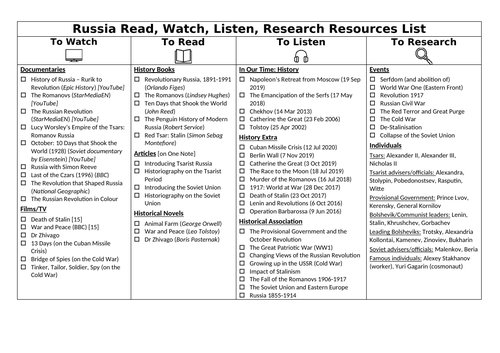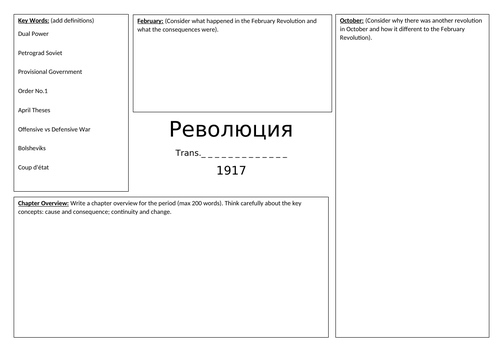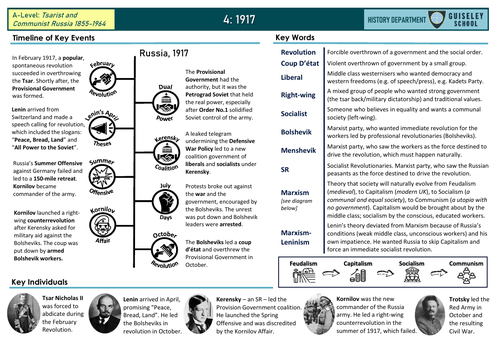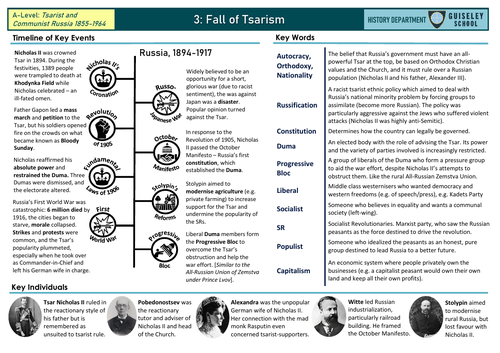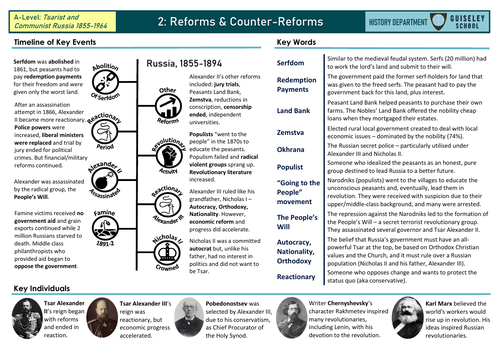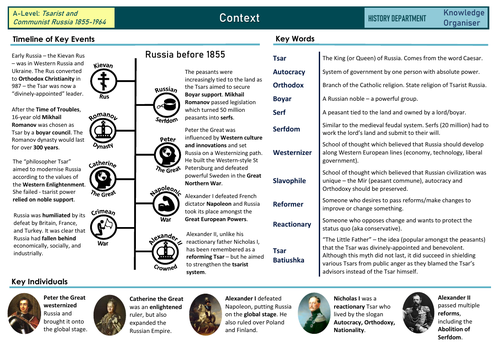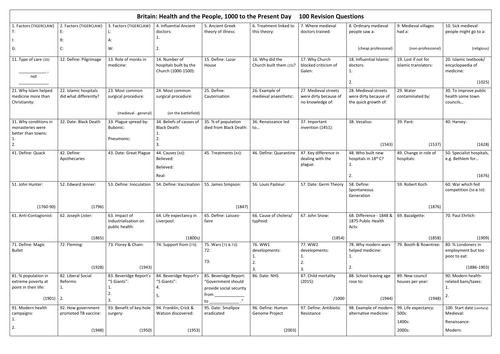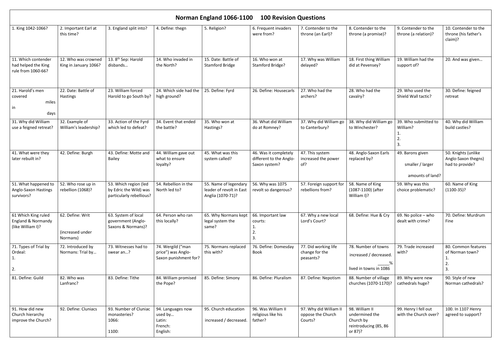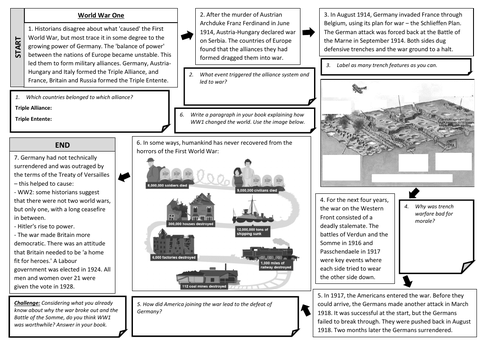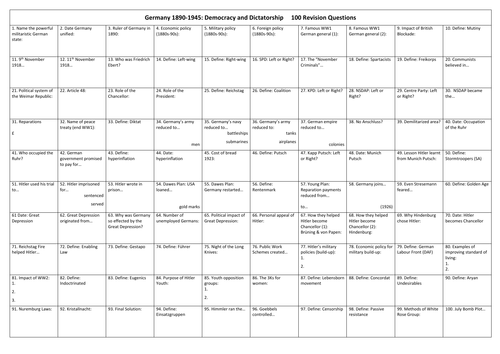26Uploads
4k+Views
1k+Downloads
History

Lessons on Decolonisation and Partition
A complete scheme of learning on decolonisation and Partition, aimed at Year 9. Comes after a scheme of learning on the British Empire.
Topics covered:
British Empire recap
Decline of the British Empire
India and the Empire
Amritsar
1920s and 1930s India movements
Impact of WW2 on the Independence Movement
Partition of India
Migration

Lessons on Civil Rights
A short scheme of work on segregation and the American Civil Rights Movement, designed for Year 9 (after a scheme of work on Nazi Germany). All PowerPoint resources included.
Topics covered:
Segregation
Race relations
Key events of the Civil Rights Movement
To what extent is America the ‘land of the free’?

Lessons on Revolutions & Russia case study
A complete scheme of learning designed for Year 9 which focuses on the concept of Revolution. The second part of the scheme looks at Russia/Soviet Union as a case study.
Purpose:
Introduce students to key substantive concepts of revolution, communism, dictatorship.
Continue developing understanding of historical disciplinary concepts: causation, chronology, interpretations, historical reading and writing.
Develop sense of period and conceptual understanding in preparation for future work on the modern world, e.g. Nazi Germany and Russia/Soviet Union, and especially about different political systems and societies.
Core enquiry questions:
Why have revolutions occurred across time and place?
How did Stalin keep the Russian Revolution going?
Why was communism such a threatening ideology for many in the modern world?
Substantive Knowledge:
Revolution, communism, dictatorship/different political systems
Disciplinary knowledge:
Chronology - Sense of period (modern world), historical writing, historical reading and interpretations, particularly how we assess how convincing an interpretation is (introducing an A-level skill/language).

Conflict and Tension: The First World War [3/3 End]
PowerPoints and all lesson materials for teaching the final third of the AQA GCSE Conflict and Tension: The First World War course. These lessons focus on the end of the war, and includes assessment practice, knowledge recall quizzes and source practice.
Key topics covered:
USA
Russia
Ludendorff Spring Offensive
100 Days
Surrender
(Parts 1 and 2 sold separately. Also see the revision materials, such as the WW1 knowledge organiser and 100 questions revision sheet.)

Conflict and Tension: The First World War [2/3 Stalemate]
PowerPoints and all lesson materials for teaching the second third of the AQA GCSE Conflict and Tension: The First World War course. These lessons focus on the war itself, including trench warfare, weapons and key battles. It also includes assessment practice, knowledge recall quizzes and source practice.
Key topics covered:
Why did trench warfare develop?
Trench warfare
Life in the trenches
Weapons
Gallipoli
Verdun, the Somme and Passchendaele
Jutland
(Parts 1 and 3 sold separately. Also see the revision materials, such as the WW1 knowledge organiser and 100 questions revision sheet.)

Conflict and Tension: The First World War [1/3 Causes]
PowerPoints and all lesson materials for teaching the first third of the AQA GCSE Conflict and Tension: The First World War course. These lessons focus on the causes of the war, and includes assessment practice, knowledge recall quizzes and source practice.
Key topics covered:
Introduction to the Great Powers
Imperialism
Militarism
Moroccan Crises
Balkan Crises
Assassination
Schlieffen Plan
(Parts 2 and 3 sold separately. Also see the revision materials, such as the WW1 knowledge organiser and 100 questions revision sheet.)

Russian History Recommended Reading, Watching, Listening & Research List
A list of recommended reading, watching, listening and researching for students studying Russian History at A-Level or GCSE. Also helpful for teachers new to teaching Russian History!

Tsarist Russia Revision Grids Pack
A pack of 7 revision grids for students to complete. The grids go with the AQA A-Level course Tsarist and Communist Russia 1855-1964 and focus on the key questions and themes of the course (e.g. political authority, opposition, socio-economic change, ideas and ideology, key individuals).
The grids focus on the following topics: 1: Context, 2: Alexander II, 3: Alexander III, 4: Nicholas II, 5: Economy, 6: War, 7: 1917.
(The grids correspond with the knowledge organisers, i.e. the Alexander II and Alexander III grids go with the reforms and counterreforms knowledge organiser.)

Knowledge Organiser - Russia 1917 Revolutions
A knowledge organiser aimed at A-Level History students studying AQA’s Tsarist and Communist Russia 1855-1964 course. This is the fourth knowledge organiser for the course which focuses on the revolutions of 1917 and includes sections on key individuals, key terms and a timeline. It also includes a section on historiography on the fall of Tsarism and the October Revolution.

Knowledge Organiser - Russia Nicholas II
A knowledge organiser aimed at A-Level History students studying AQA’s Tsarist and Communist Russia 1855-1964 course. This is the third knowledge organiser for the course which focuses on Nicholas II and the fall of Tsarism (1894-1917) and includes sections on key individuals, key terms and a timeline

Knowledge Organiser - Russia Alexander II & Alexander III Reforms & Counter-Reforms
A knowledge organiser aimed at A-Level History students studying AQA’s Tsarist and Communist Russia 1855-1964 course. This is the second knowledge organiser for the course which focuses on the reigns of Alexander II and Alexander III and their reforms and counter-reforms (1855-1894) and includes sections on key individuals, key terms and a timeline

Knowledge Organiser Russia before 1855 (context)
A knowledge organiser aimed at A-Level History students studying AQA’s Tsarist and Communist Russia 1855-1964 course. This is the first knowledge organiser for the course which focuses on key contextual information (pre-1855) and includes sections on key individuals, key terms and a timeline.

Russia Pre-1855 Context Booklet
A context booklet designed to be used in lesson time to introduce A-Level students to Russia before 1855. Includes various activities such as extended reading, note-taking practice, introduction to working with interpretations, analysis and source work. Designed to complement the AQA A-Level 1H Tsarist and Communist Russia 1855-1964 course.

Medicine 100 Questions
100 questions sheet (A3) on medicine through time which require only a few words to answer (student can fill in the answers on the sheet). A useful revision task! Answers also provided.
Covers the whole of the Britain: Health and the People 1000-Present Day AQA GCSE History topic and the questions are ordered chronologically to highlight areas of misconception.

Normans 100 Questions
100 questions sheet (A3) on Norman England, including the Norman Conquest and its aftermath, changes from Anglo-Saxon to Norman society, and the Church. The questions require only a few words to answer (student can fill in the answers on the sheet). A useful revision task! Answers also provided.
Covers the whole of the Norman England 1066-1100 AQA GCSE History topic and the questions are ordered chronologically to highlight areas of misconception.

Rise of the Nazi Party worksheet
A flow chart-style worksheet on the rise of the early Nazi party. The sheet includes short summaries, comprehension questions, a recall task, key terms boxes for students to add definitions, and a source task.
The worksheet is A3 and is designed for students to complete the majority of the work on the sheet.
The worksheet has been used for both the AQA and Edxecel units on Nazi Germany.

WW1 Overview Worksheet
A flow chart-style worksheet (aimed at KS3) which charts the overview of the First World War and includes tasks for students to complete as they work their way through the sheet reading the information. There is also a challenge task at the end.
The worksheet was designed as either a short introduction to the war or a revision task which could be completed at the end of a First World War unit.
The worksheet includes short chunks of text, a task per text box, images, a diagram to annotate, and a final challenge task. It covers the start of the war and alliance systems, trench warfare, the end of the war and the legacy of the war.

Germany 100 Questions
100 questions sheet (A3) on Weimar and Nazi Germany which require only a few words to answer (student can fill in the answers on the sheet). A useful revision task! Answers also provided.
Covers the whole of the Germany 1890-1945: Democracy and Dictatorship AQA GCSE History topic and the questions are ordered chronologically to highlight areas of misconception.

WW1 100 Questions
100 questions sheet (A3) on the First World War which require only a few words to answer (student can fill in the answers on the sheet). A useful revision task! Answers also provided.
Covers the whole of the Conflict and Tension: First World War 1894-1918 AQA GCSE History topic and the questions are ordered chronologically to highlight areas of misconception.

History Homework Menu and Feedback Sheet
Homework menu (with differentiated options for students to choose between), homework tracker and peer feedback grid, and a list of some ideas for KS3 History homework. (All based on ideas I have picked up from different schools, teachers and resources I have seen).
The homework menu is intended to be used for one project and has slots for challenging, hard, medium and simple tasks (named Food Mountain - challenging, Hearty Helping - hard, Light Bite - medium, and Snack - simple). The instructions for how many of each level should be attempted throughout the project are explained on the homework tracker. There is also a grid which students can use to jot down deadlines for each part of the project (there are three part to each project - the starter, main and dessert). The peer feedback grid allows students to praise and evaluate their peer’s work and for the student to respond to this feedback.




![Conflict and Tension: The First World War [3/3 End]](https://d1e4pidl3fu268.cloudfront.net/d945bc08-4adf-4b8d-bfff-a32ce39db7da/Screenshot20240225124230.crop_632x474_0,0.preview.png)
![Conflict and Tension: The First World War [2/3 Stalemate]](https://d1e4pidl3fu268.cloudfront.net/fdd020b3-e6cf-48a2-ba1a-f989ad9f96f5/Screenshot20240225123730.crop_632x474_0,0.preview.png)
![Conflict and Tension: The First World War [1/3 Causes]](https://d1e4pidl3fu268.cloudfront.net/0bf5e76d-b8b7-4659-95b5-d9c8d70a0ad4/Screenshot20240225123512.crop_632x474_0,0.preview.png)
